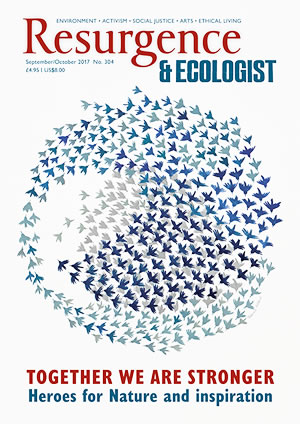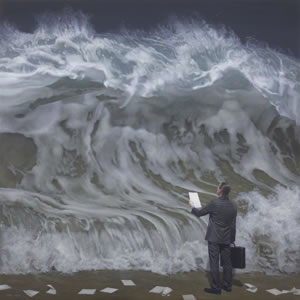Our understanding of the Earth we inhabit is undergoing a radical change. The modern ideas of the Earth as the environment in which humans make their home, or as a knowable collection of ecosystems more or less disturbed by humans, are being replaced by the conception of an inscrutable and unpredictable entity with a violent history and volatile mood swings. Earth System scientists have reached for rough metaphors to capture this new idea – images of “the wakened giant” and “the ornery beast”, of Gaia fighting back and seeking revenge, of a world of “angry summers” and “death spirals”.
This new conception of the Earth System is inconsistent with the understanding of a Nature victimised and colonised by humans that has emerged since the 1960s. It is an understanding captured in phrases from the 1990s like “the end of Nature”, “nothing but us”, and “the Earth’s cry for rescue”, and morphing into more recent renderings like a “humanised Earth”, “the kind of Nature we wish to have”, “Nature no longer exists apart from humanity,” and “It is our choice what happens here.” Whether the mood is one of lament or triumph, in all of these expressions Nature is our victim or our servant.
Yet Earth System Science now tells us that, rather than dying, Nature as the Earth System has in fact come alive or (perhaps a better metaphor) is waking from slumber. It’s true that wherever we look we see human influence, but at the same time we see stirring an angry, ornery, vengeful Earth that is more detached from us than it has been for 10,000 years. Contrary to the comforting expectation that in the Anthropocene we can have “the kind of Nature we wish to have”, as we enter the new epoch we will meet an Earth that is further and further from the Earth we might want. And against the belief that the world we will inhabit is the one we have made, the world we will have to live with is the Earth we have turned against us.
In other words, these views of the end of Nature and of a humanised Earth subject to our choices may have been appropriate to the Holocene, but Holocene thinking has been supplanted by Anthropocene thinking. This all follows from the primary fact that the Anthropocene is a rupture, whereas all of these views about the death of Nature and so on do not recognise that a rupture has occurred, but write as if there were continuity, a continuous process of human colonisation going back thousands of years, albeit one that has intensified in recent decades.
So, on this new Earth, notions of human domination – whether positively as mastery or negatively as victimisation – have to be discarded. It follows that the benign ideas of good stewardship and a loving Mother Earth are redundant too. Nature is no longer passive and fragile, suffering in silence, “the sister [who] cries out to us”, in the words of Pope Francis. In the Anthropocene, it is no longer tenable to believe that “our common home is like a sister with whom we share our life and a beautiful mother who opens her arms to embrace us.” In the Holocene, to view the world, as the encyclical does, as “entrusted … to … men and women” was a plausible working hypothesis. But no more. Now when Mother Earth opens her arms it is not to embrace but to crush us.
Our goal can no longer be to save Nature, but to save ourselves, from ourselves and from Nature, knowing that every disturbance to the Earth System reduces the chances of doing so. Nature is no longer (as Pope Francis writes) “a magnificent book in which God speaks to us and grants us a glimpse of his infinite beauty and goodness”, but a grim report in which scientists speak to us and grant us a glimpse of disrupted natural patterns and a chaotic climate.
Or perhaps it is more accurate to say that it is both a sublime Earth that presents itself to us as beautiful when becalmed and terrifying when enraged, an intimate planet and an alien one, Mother and Other.
This is an edited extract from his book Defiant Earth: The Fate of Humans in the Anthropocene, recently published by Polity Press (and by Allen & Unwin in Australia).







